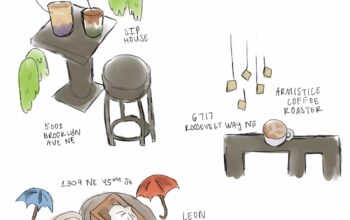In 1963, Robert Rosenthal, a professor of psychology at Harvard University, devised an experiment. He had two groups of students test the maze-running performance of albino rats. He told the students that their rats were specially bred to be “maze bright” or “maze dull”. In reality, all of the rats in the experiment were standard lab rats, randomly assigned to the two groups. Stunningly, the rats in the “maze bright” group learned the test faster. Somehow, the students had unconsciously influenced the results of the test. The rats results depended on how they were labeled instead of their real capabilities.
It’s not hard to see how this experiment applies to high school. If teachers view certain students as smart, they could unconsciously influence those students to do better in school. When labels are as ubiquitous as they are in Roosevelt, it’s impossible to ignore their influence. Admittedly, high-schoolers are not rats, and this experiment might not be the best representation of school dynamics. But there’s more evidence to show how expectations can define a student’s achievement.
Robert Rosenthal had another experiment. He believed that if rats could be influenced by tester expectations, so could first graders. He and his colleague, Laurie Jacobson, administered an IQ test to all children at an elementary school. They then sorted the children randomly into different classes. 18 teachers were told that their students were ‘ready to bloom’ and had received very high intelligence scores. Eight months later, the children in the ‘advanced’ classrooms showed unusual gains in intelligence compared to children in control groups, despite being chosen randomly. The teachers expectations controlled the students intelligence, rather than the students themselves.
In high school and many other school settings, expectations are everything. Prophecies of low achievement set forth by standardized tests are often fulfilled by the students themselves. As a community, we must ask ourselves what we can do to mitigate the effects of harmful expectations. We must not allow our school to be Rosenthal’s rat maze, where students achieve not what they’re capable of but by what is expected of them.


